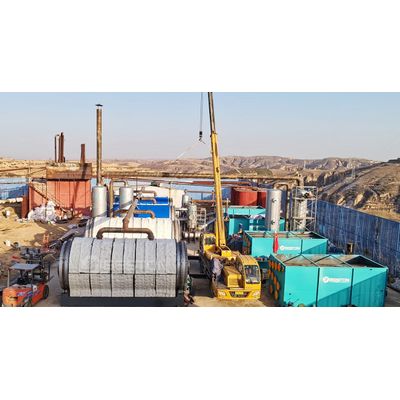

- Home
- Companies
- Beston Group Co., Ltd.
- Articles
- 7 Reasons try using a Continuous ...

7 Reasons try using a Continuous Pyrolysis Plant
A pyrolysis plant is really a machine that stops working organic material into combustible gases, liquids, and solids. The gases enable you to generate heat or electricity, while the liquids and solids can be used as fuels or fertilizers. Pyrolysis plants are often utilized in the building industry to process waste matter, like wood, plastic, and rubber. They can also be used to transform municipal solid waste into fuel.
Pyrolysis plants come in a variety of sizes, from small units that process only a few pounds of material an hour to large industrial-scale plants that can process hundreds of pounds each hour.
How continuous pyrolysis plants work
Pyrolysis can be a procedure of thermal decomposition where organic matter is decomposed at elevated temperatures in the lack of oxygen. The phrase “pyrolysis” hails from the Greek words “pyr” meaning fire, and “lys” meaning to get rid of down. Pyrolysis can happen naturally, for example in forest fires, or it could be induced industrially. Industrial pyrolysis is often used to convert waste matter into usable products, like fuels or chemicals.
Continuous pyrolysis plants are industrial systems that may convert organic waste into energy without the need for oxygen. These plants typically operate at high temperatures (around 700-one thousand degrees Celsius) and employ a number of techniques to heat the waste material.
The most typical form of continuous pyrolysis plant works with a rotating kiln or drum to heat the waste material. As the drum rotates, the waste material is consistently exposed to high temperatures, causing it to decompose into gaseous and liquid products. These products can then be collected and either used as fuel or further processed into other chemicals.
What are the great things about continuous pyrolysis plants?
Continuous pyrolysis plants offer numerous advantages over traditional incineration systems. They are more energy-efficient, enable you to process a wider range of materials, and produce less pollution.
1. These are more energy-efficient: Continuous pyrolysis plants can convert as much as 95% of the waste material into usable products, whereas traditional incineration systems only convert about 50% of the waste material into energy.
2. They enable you to process a broader range of materials: Continuous pyrolysis plants could be used to process various organic waste materials, including wood, plastic, rubber, and even medical waste.
3. They produce less pollution: Continuous pyrolysis plants produce very little pollution because the waste material is completely transformed into usable products. There is absolutely no smoke or emissions released to the atmosphere, as well as the only by-product is a tiny amount of ash.
4. These are more versatile: Continuous pyrolysis plants enable you to generate a number of usable products, including fuel, chemicals, and also fertilizers.
5. They are simpler to operate: Continuous pyrolysis plants are much better to operate than traditional incineration systems because they do not require constant monitoring and adjustment.
6. These are safer: Continuous pyrolysis plants are far safer than traditional incineration systems because there is no chance of explosion or fire
7. These are more inexpensive: Continuous pyrolysis plants will be more cost-effective than traditional incineration systems since they require less energy to operate and provide less pollution.
